Polyvinylidene difluoride, commonly known as PVDF, is a polymer that has gained significant recognition in various industries due to its exceptional properties. This article will delve into the extensive applications of PVDF across different sectors, highlighting its versatility, durability, and unique qualities that make it an indispensable material in modern industrial processes.
1. Pengantar PVDF
Polyvinylidene difluoride, or PVDF, is a thermoplastic fluoropolymer characterized by its high molecular weight and unique chemical structure. It consists of repeating units of vinylidene difluoride (VDF), with the chemical formula (CH2CF2)n. PVDF is renowned for its exceptional balance of physical and chemical properties, making it a sought-after material in numerous industrial applications.
2. Properties of PVDF

Before delving into its applications, let’s briefly review the key properties that make PVDF stand out:
2.1. Chemical Resistance
PVDF is highly resistant to a wide range of chemicals, including acids, bases, and organic solvents. This property makes it ideal for applications where exposure to aggressive substances is common.
2.2. Mechanical Strength
PVDF exhibits remarkable mechanical strength and toughness, making it suitable for applications that demand durability and resistance to wear and tear.
2.3. Electrical Properties
PVDF boasts excellent electrical properties, with a high dielectric constant and low dissipation factor. This makes it a preferred material in the electronics and electrical engineering sectors.
2.4. Stabilitas Termal
PVDF can withstand moderate temperatures, with a melting point in the range of 160-170°C (320-338°F). Its thermal stability is advantageous in various industrial processes.
2.5. UV Resistance
PVDF is known for its exceptional UV resistance, making it suitable for outdoor applications where exposure to sunlight is a concern.
3. PVDF in Chemical Processing
3.1. Pipes and Fittings
PVDF is widely used in the chemical industry for the construction of pipes, valves, and fittings due to its excellent chemical resistance. It ensures the safe handling and transport of corrosive substances.
3.2. Linings and Coatings
PVDF coatings and linings protect equipment and containers from chemical corrosion. They are applied to tanks, reactors, and other vessels in the chemical processing industry.
4. PVDF in the Electronics Industry
4.1. Capacitors
PVDF’s high dielectric constant makes it an ideal material for manufacturing capacitors, a crucial component in electronic circuits.
4.2. Piezoelectric Sensors
PVDF’s piezoelectric properties allow it to be used in sensors, such as those employed in touchscreens, ultrasound devices, and acoustic transducers.
5. PVDF in Aerospace Applications
5.1. Aircraft Components
PVDF is utilized in the aerospace industry for its lightweight and high-strength properties. It is used in aircraft components such as fuel lines and ducts.
5.2. Coatings
PVDF coatings are applied to aircraft exteriors to enhance their resistance to UV radiation and environmental factors.
6. PVDF in Building and Construction
6.1. Architectural Finishes
PVDF coatings are popular choices for architectural finishes on buildings. They provide durability and weather resistance while maintaining aesthetic appeal.
6.2. Cable Insulation
PVDF’s electrical properties make it suitable for cable insulation in construction projects.
7. PVDF in the Medical Field
7.1. Implants
PVDF is biocompatible, making it suitable for medical implants and prosthetics.
7.2. Drug Delivery
PVDF is used in drug delivery systems, facilitating the controlled release of pharmaceuticals within the body.
8. PVDF in Energy and Environment

8.1. Photovoltaic Modules
PVDF is used in the production of photovoltaic modules for solar energy generation.
8.2. Batteries
PVDF is employed in battery technologies, contributing to the development of advanced energy storage solutions.
9. Frequently Asked Questions (FAQ)
Q1: Apakah PVDF ramah lingkungan?
PVDF is considered safe for the environment and is recyclable, reducing its environmental impact.
Q2: Can PVDF be used for potable water applications?
Yes, PVDF is approved for potable water contact applications as it meets regulatory standards for water safety.
Q3: What industries benefit the most from PVDF’s properties?
PVDF finds extensive use in the chemical, electronics, aerospace, and medical industries due to its unique combination of properties.
Q4: Are there any limitations to PVDF?
While PVDF has numerous advantages, it can be costlier compared to other materials, which may influence its adoption in certain applications.
Q5: How is PVDF processed into various forms?
PVDF can be shaped using techniques such as extrusion, injection molding, and compression molding, allowing it to take on different forms to suit specific applications.
In conclusion, PVDF’s remarkable properties, including its chemical resistance, mechanical strength, electrical capabilities, and thermal stability, have made it a versatile material in various industries. Whether it’s safeguarding against corrosive chemicals, enhancing electronic devices, or improving energy solutions, PVDF continues to play a vital role in advancing technology and industry. Its durability and adaptability ensure its place as a material of choice in modern industrial processes.


